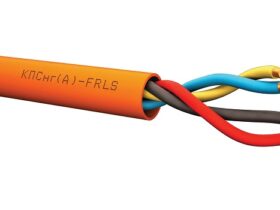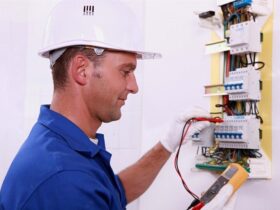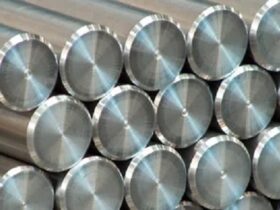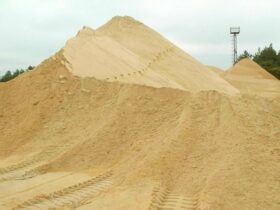Motor pumps or surface pumps
Each type of pump has its own nuances that clearly define the area of possible application, where a specific model can give us the result we need.. Let’s consider in what cases a motor pump for water with a surface installation is suitable for us in terms of its qualities.
Design
A motor pump generally consists of a motor and an impeller mounted on a shaft. Water enters and exits through hoses (or pipes, as a rule, if the pump is permanently installed), which are connected by a threaded method (the more powerful the pump, the larger the diameter of the hose you need to use). Optionally, there are various sensors, for example, to protect against dry running (there is no water in the system, and the pump continues to work until it burns out, and you won’t have to wait long, just a couple of minutes will be enough), a pressure sensor (a special case — a pumping station, simplified pump + sensor + hydroaccumulator, the work is automated according to the principle “open the tap — the pump is pumping — the water is running”), a thermal relay (it will turn off when overheating, sometimes it will help when running dry, but do not rely on this) and overload protection.
Advantages and disadvantages
Undoubtedly, the advantage of such motor pumps can be considered their excellent maintainability — everything is in sight, under complete control, and can be quickly replaced. An exception is a pumping station, where the pump and accumulator are assembled into a monoblock case. As an example, take a look at the commonly found German-Chinese Gardena.
The second positive point is that such a water supply system is very mobile, easily mounted and dismantled almost anywhere — one hose into the water, the second to the target (for example, watering plants, for which a surface pump is often called a garden pump, or fire extinguishing, which is more important for motor pumps on gasoline or diesel fuel with high performance, they are often bought specifically for this task according to the requirements of the fire department). In gardens where people spend their weekends, they often make an easily demountable (quick-detachable) water supply system, when the pump is removed to the barn during the absence of people.
Now about the cons. The pump works loudly enough, it cannot be installed in the living room. It is also not used in the cold, there is a risk that the pump housing will crack or burst when the water in it freezes. Repair is possible, but more often than not it is easier to buy a new one.
Also, be sure to pay attention to the fact that a surface motor pump will not lift water from a depth of more than eight meters. For the suction line, equality is true: one meter vertically corresponds to ten meters horizontally. The further the distance from the pump to the water, the more powerful the motor will cope with providing acceptable pressure and performance characteristics. They decrease depending on how deep, how high (or far) the pump drives the water. On a low-power device, the pressure loss will, of course, be higher.
Electric pump
Easy to handle and generally cheaper than petrol or diesel. The household version operates at 220 volts. Three-phase 380 V are used in industry, it makes no sense to talk about them here. Provides an average pressure of 1.5 to 4 bar and a capacity (amount of pumped water) from 1400 to 3500 liters per hour. It is often more convenient to count in minutes, just divide the hour value by 60.
Internal combustion engine pump
Or, in other words, a motor pump. It differs from the electric one in greater performance, with 10,000 lh, as a rule, everything is just beginning. Gasoline or diesel engines. Among the information about the former, you can find the word «two-stroke» or «four-stroke». Without going into subtleties, on relatively low-power pumps, the engines are refueled with a pre-prepared fuel mixture — gasoline in relation to a special engine oil. There is a four-stroke engine in our cars, there is no point in telling how to handle it, the information is well-known.
The motor pump does not depend on electricity, it works everywhere in general, pumps out any water in which the logs do not float. This is an exaggeration, of course, but the mud variety can drain reservoirs and pools, pump out sewers, especially powerful ones are used to pump oil products. The high-pressure version pumps clean water, less, but with a high outlet pressure, and is used in autonomous water supply of houses, you only need to store fuel somewhere and remove engine exhaust gases.
In conclusion, we will mention manual models, they will also find their application when the light is turned off or the motor pump stops working. They are cheap, compact and extremely unpretentious. They are also stationary and portable..
That’s all about surface pumps..

















Оставить коммент.